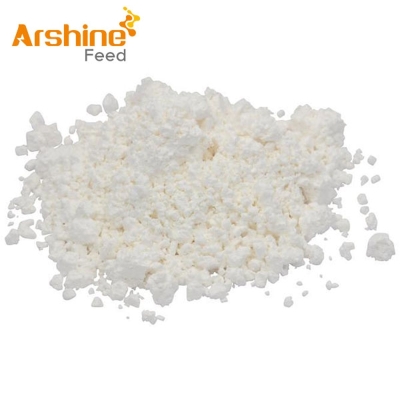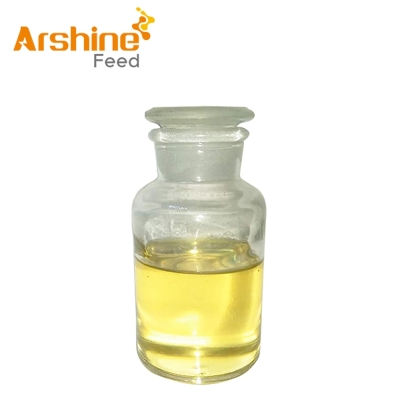Background and influence of the regulations on genetically modified organisms (1)
-
Last Update: 2001-11-12
-
Source: Internet
-
Author: User
Search more information of high quality chemicals, good prices and reliable suppliers, visit
www.echemi.com
Introduction: Tang Yanli, information center analysis Office of the Ministry of agriculture I China's regulations on genetically modified organisms are in line with the technical barriers to trade agreement (TBT) under the framework of WTO What are the technical barriers to trade (I) in the agreement on sanitary and phytosanitary measures (SPS Agreement)? Technical barrier to trade (TBT) refers to the technical measures taken by a country to protect the health, life and safety of human beings, animals and plants, protect the ecological environment, prevent fraud and ensure product quality on the basis of national security These measures become barriers for other countries to enter the market freely TBT is a world trade policy set up by the World Trade Organization (WTO) according to TBT Association (1991 Uruguay Round text, hereinafter referred to as "agreement text") With the increasing reduction of tariff barriers, which are resisted by the majority of member countries, TBT is generally adopted by the developed countries in the west, and has become a common means for the developed countries to protect their own markets and control imports In fact, the EU, the United States, Japan and other countries and organizations have set up various technical barriers to trade in China's aquatic products, meat products, horticultural products, and implemented strict quarantine and epidemic prevention systems, some even discriminatory measures close to the ban For example, in June 1998, the British government announced that China must purify all the breeding grounds for export of ornamental fish for more than two years and supervise the carp disease virus, which in fact unilaterally banned the export of ornamental fish in China (2) What is the agreement on sanitary and phytosanitary measures? Animal and plant health quarantine measures are also measures taken to protect human, animal or plant life or health, including the protection of the ecological environment The implementation of these measures should not constitute arbitrary and unreasonable discrimination or disguised restrictions on international trade The agreement is expected to further promote the use of international standards and norms set by existing international organizations The agreement recognizes the special suffering that developing country members may encounter in implementing the agreement, and therefore expects developed countries to provide them with technical assistance China is a developing country Compared with developed countries, the requirements of hygiene inspection and Quarantine of agricultural products and food are far behind in terms of relevant technical regulations, standards, inspection management and witness system China is in a passive position in trade, often the victim of trade barriers in developed countries For example, China exports rice to Japan with 56 inspection items stipulated by Japan, of which more than 90% are items of health and quarantine measures; for example, the requirements of health standards for poultry exported to Japan are 500 times higher than the international health standards Therefore, improving the quality, hygiene and quarantine level of agricultural products and food is the first condition for China to participate in international competition after entering WTO On the other hand, compared with developed countries, there are basically no technical trade barriers restricting import trade in China Therefore, it is necessary to further improve the inspection, supervision and management system of import and export commodities in China 2、 The background of the regulations on the safety management of agricultural genetically modified organisms (1) the development and current situation of transgenic technology Transgenic organisms refer to the organisms that introduce foreign genes (genes from different genera and species) into the target organisms through bioengineering technology, so that they can obtain new characters Transgenic biotechnology has played an important role in solving global food, resources, environment and other major issues Up to November 2000, more than 200 new crop materials and varieties, such as herbicide resistance, insect resistance, disease resistance, improvement of nutritional quality, medical care and so on, have been successfully cultivated in nearly 50 countries The global planting area of genetically modified plants increased by about 25 times in the five years from 1996 to 2000 According to the prediction of relevant departments, in 2000, the total planting area of GM soybeans in the world reached over 44.2 million hectares, an increase of 11% over 1999 In 1996, the planting area of GM soybeans in the world was only 1.7 million hectares In six years, the planting area of GM soybeans increased 26 times The United States is currently the world's largest producer and exporter of genetically modified products According to the survey results released by the US Department of agriculture on July 5, 2001, 33.3 million hectares of genetically modified soybeans were planted in the US this year, an increase of 18% over the previous year, accounting for 68% of the planting area According to the information of Seed Association of Argentina, transgenic soybean in Argentina accounts for 90% of soybean planting area It is estimated that there are nearly 70 million tons of genetically modified soybeans among the 150 million tons of soybeans produced in the world, accounting for 47% (2) The controversy on the technology of genetically modified organisms (GMOs) it is difficult to predict the possible impact of the emergence of a large number of new species and new shapes on human beings and the ecological environment People are worried that the human gene may change after long-term consumption of genetically modified food; they are worried that some genetically modified organisms will cause harm to the environment due to human uncontrollable, and the debate on the safety of genetically modified organisms has never stopped On August 16, 2001, Belgian scientists found that "transgenic soybeans contain unrecognized and abnormal DNA fragments, which are not related to Soybean DNA sequence or soybean chromosome map." Once again, it caused people to worry about the safety of genetically modified organisms, which also led to a sharp drop in the market of CBOT on that day On the surface, the issue of transgenic is a scientific debate, but it also contains a deeper reason In addition to scientific research institutions, there are also government, enterprises, consumers, news and other institutions, religions and environmental protection organizations, which make the debate political and economic, but in the final analysis, it can be attributed to the conflict of economic interests The first is the conflict of economic interests between countries or economic organizations Producers: represented by the United States, Argentina, Canada and Australia, which are the most widely used countries in the world, they believe that genetically modified crops have safety protection; consumers: the European Union, Japan and most third world countries as well as environmental protection organizations strongly advocate to limit the import of genetically modified crops Secondly, it is the economic interests of businessmen and producers Producers and operators: farmers, biotech companies and herbicide producers benefit from GM soybeans; consumers: do not feel the benefits, and therefore do not want to take risks China is the largest exporter of genetically modified soybeans in the United States The decrease of exports to China means the huge loss of economic interests of American farmers and traders Therefore, the publication of China's genetically modified regulations will attract such attention from the United States (3) The safety management of agricultural genetically modified organisms in the world The United States is the country with the most research on the safety of genetically modified technology, and also the country with relatively loose safety management of genetically modified organisms The United States adopts the products based management mode, that is to say, there is no essential difference between genetically modified organisms and non genetically modified organisms The object of "see space management" is the biotechnology products rather than the biotechnology itself But at the end of 1999, the U.S Congress also proposed a strict program on genetic food improvement, which approved the labeling of all genetically modified foods In contrast to the United States, NWN is strict in the management of agricultural genetically modified organisms, which adopts a process based management mode The EU believes that recombinant DNA technology has potential risks No matter what kind of gene or what kind of organism, as long as the genetically modified organisms obtained through recombinant technology are subject to safety evaluation and monitoring From October 1998, the European Union stipulated that food retailers must mark on food labels whether they contain genetically modified ingredients In April 1999, it suspended the approval of new genetically modified agricultural products on the market In 2000, it decided again to suspend the cultivation and sale of genetically modified crops Since April 2000, Japan has implemented a labeling system for genetically modified products, and formulated "content and implementation methods of genetically modified food"; Australia, South Korea, Russia and other countries have also stipulated that all foods processed with genetically modified raw materials must be clearly labeled before they can be sold; Brazil is prohibited from selling genetically modified soybeans on the market With the increasing emphasis on the safety of genetically modified products, more and more countries are developing corresponding regulatory measures NWN
This article is an English version of an article which is originally in the Chinese language on echemi.com and is provided for information purposes only.
This website makes no representation or warranty of any kind, either expressed or implied, as to the accuracy, completeness ownership or reliability of
the article or any translations thereof. If you have any concerns or complaints relating to the article, please send an email, providing a detailed
description of the concern or complaint, to
service@echemi.com. A staff member will contact you within 5 working days. Once verified, infringing content
will be removed immediately.







